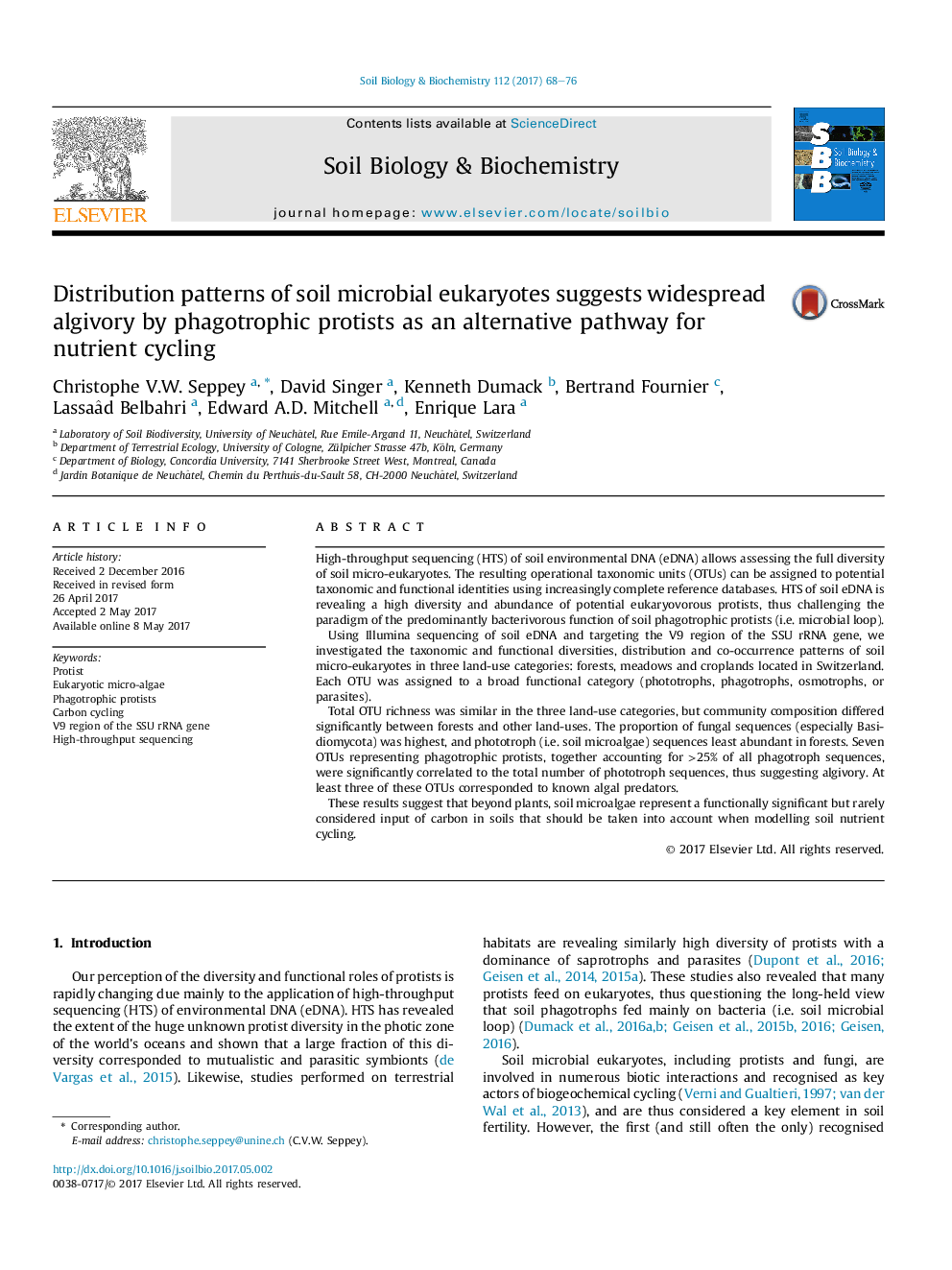| کد مقاله | کد نشریه | سال انتشار | مقاله انگلیسی | نسخه تمام متن |
|---|---|---|---|---|
| 5516338 | 1542572 | 2017 | 9 صفحه PDF | دانلود رایگان |
• We studied soil micro-eukaryotes in Swiss forests, meadows and cropland.
• Micro-eukaryote community patterns differ between forests and open habitats.
• Shannon diversity is lower in forests then in open habitats (meadows and croplands).
• Eukaryotic micro-algae are more abundant in open habitats than in forests.
• 20-25% of phagotroph sequences belong to OTUs which correlate with phototroph abundance.
High-throughput sequencing (HTS) of soil environmental DNA (eDNA) allows assessing the full diversity of soil micro-eukaryotes. The resulting operational taxonomic units (OTUs) can be assigned to potential taxonomic and functional identities using increasingly complete reference databases. HTS of soil eDNA is revealing a high diversity and abundance of potential eukaryovorous protists, thus challenging the paradigm of the predominantly bacterivorous function of soil phagotrophic protists (i.e. microbial loop).Using Illumina sequencing of soil eDNA and targeting the V9 region of the SSU rRNA gene, we investigated the taxonomic and functional diversities, distribution and co-occurrence patterns of soil micro-eukaryotes in three land-use categories: forests, meadows and croplands located in Switzerland. Each OTU was assigned to a broad functional category (phototrophs, phagotrophs, osmotrophs, or parasites).Total OTU richness was similar in the three land-use categories, but community composition differed significantly between forests and other land-uses. The proportion of fungal sequences (especially Basidiomycota) was highest, and phototroph (i.e. soil microalgae) sequences least abundant in forests. Seven OTUs representing phagotrophic protists, together accounting for >25% of all phagotroph sequences, were significantly correlated to the total number of phototroph sequences, thus suggesting algivory. At least three of these OTUs corresponded to known algal predators.These results suggest that beyond plants, soil microalgae represent a functionally significant but rarely considered input of carbon in soils that should be taken into account when modelling soil nutrient cycling.
Journal: Soil Biology and Biochemistry - Volume 112, September 2017, Pages 68–76
